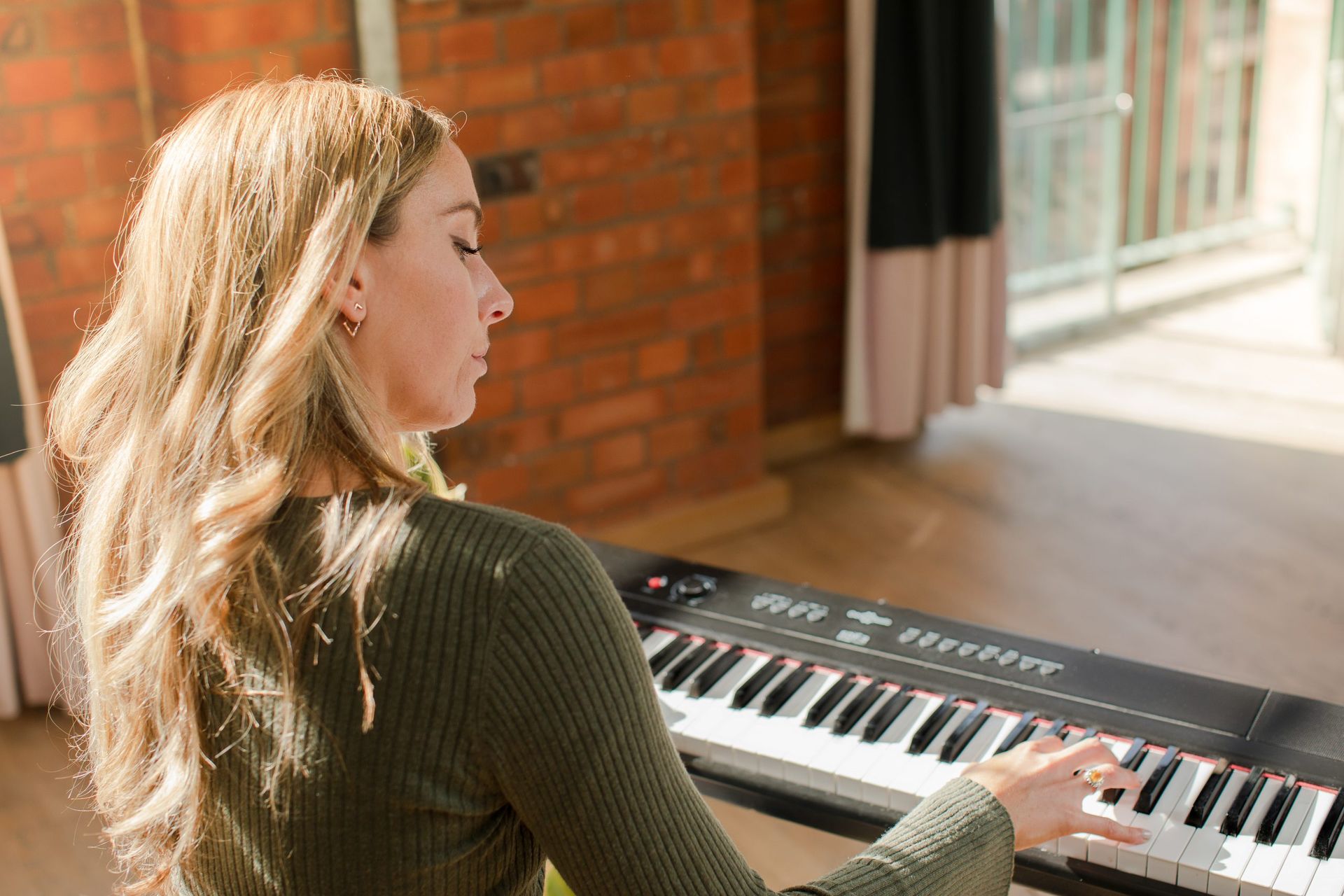Home>Production & Technology>Tempo>What Is The Best Beat Per Minute Tempo Music To Workout To


Tempo
What Is The Best Beat Per Minute Tempo Music To Workout To
Published: December 10, 2023
Discover the ideal beat per minute tempo for your workout music and maximize your performance. Find out which tempo will give you the perfect rhythm to elevate your workout intensity.
(Many of the links in this article redirect to a specific reviewed product. Your purchase of these products through affiliate links helps to generate commission for AudioLover.com, at no extra cost. Learn more)
Table of Contents
Introduction
When it comes to working out, finding the right tempo or beat per minute (BPM) in the music you listen to can have a significant impact on your performance and overall experience. Whether you’re hitting the weights, going for a jog, or practicing yoga, the right tempo can provide the motivation, energy, and rhythm needed to enhance your workout.
Tempo refers to the speed or pace of a piece of music, specifically measured in BPM. It is commonly used in fitness settings where the rhythm of the music can synchronize with your exercise movements, helping you maintain a consistent pace and providing a sense of rhythm and flow.
The right music tempo can make a world of difference during your workout sessions. It can boost your endurance, increase your motivation, and even distract you from the physical discomfort that may arise during intense workouts.
In this article, we will explore the impact of tempo on workout performance and discuss the ideal BPM range for different types of exercises. We will also delve into the benefits of high and low BPM music for workouts, as well as factors to consider when selecting the right tempo for your fitness routine. So, whether you’re a seasoned gym-goer or just starting out on your fitness journey, read on to discover the best BPM tempo music for your workouts.
Tempo and Workout Performance
Tempo is a crucial factor in determining the effectiveness and enjoyment of your workouts. The rhythm and pace of the music can directly influence your body’s movement and energy levels during exercise. When the beats per minute (BPM) align with your desired intensity, you’ll find yourself in the optimal mindset to push harder, maintain consistent pacing, and enjoy a more engaging workout experience.
Research has shown that music with a higher BPM tends to increase exercise performance and motivation. This is because fast-paced music can stimulate the release of adrenaline, leading to increased energy levels, improved focus, and enhanced endurance. The lively rhythm can also serve as a distraction, helping you to push through physical discomfort and fatigue during intense workouts.
On the other hand, slower music with a lower BPM can be beneficial for low-impact exercises such as yoga or stretching routines. It encourages a relaxed state of mind, promotes deep breathing, and allows for a more mindful experience. The calming nature of slow-paced music can also aid in reducing stress and promoting a sense of tranquility during your workouts.
It’s important to note that finding the right tempo for your workout is a personal preference and can vary depending on the type of exercise, your fitness goals, and your individual taste in music. Some people may find that a higher BPM helps them stay motivated and energized, while others may prefer a slower tempo to promote a more meditative and focused state.
As we delve deeper into this article, we will explore the ideal BPM range for different workouts and highlight the benefits of both high and low BPM music. By understanding how tempo affects workout performance, you can tailor your music choices to optimize your results and make your workouts more enjoyable.
The Ideal Beat Per Minute (BPM) Range
When considering the ideal beat per minute (BPM) range for your workouts, it’s important to understand that different activities require different tempos to maximize performance and engagement. The BPM range refers to the number of beats per minute in a piece of music, and it can significantly impact the intensity, pace, and overall experience of your exercises.
For high-intensity workouts such as cardio or HIIT (high-intensity interval training), a BPM range of 120-140 is often recommended. This range is known for its ability to elevate heart rate and energy levels, ultimately increasing the intensity of your workout. The fast-paced beats can provide a constant rhythm to match your fast movements, helping you maintain a consistent pace and optimize your cardiovascular endurance.
For strength training or weightlifting exercises, a slightly lower BPM range of 100-120 is often preferred. This range allows for more controlled and deliberate movements, giving you the opportunity to focus on form and technique. The rhythmic beats can help you establish a rhythm and cadence during your lifts, enhancing your mind-muscle connection and overall performance.
For activities that require a relaxed and focused state, such as yoga or Pilates, a BPM range of 60-80 is commonly recommended. The slow and steady beats provide a calming backdrop that promotes mindfulness, deep breathing, and a sense of tranquility. This lower BPM range allows you to move at a deliberate and controlled pace, focusing on alignment, flexibility, and breath awareness.
It’s important to note that these BPM ranges are general recommendations, and personal preferences may vary. Some individuals may prefer a slightly higher or lower BPM within these ranges based on their fitness level, workout intensity, and personal taste in music.
As you explore different BPM ranges for your workouts, consider experimenting with different tempos to find what works best for you. Pay attention to how the music makes you feel, the way it matches your movements, and the impact it has on your overall motivation and engagement. By finding the right BPM range, you can optimize your performance, enjoyment, and results during your workouts.
Benefits of High BPM Music for Workouts
High BPM music, typically ranging from 120 to 140 beats per minute (BPM), offers numerous benefits for workouts, especially those that require a fast-paced and energized approach. Here are some advantages of incorporating high BPM music into your fitness routine:
- Increased Energy and Intensity: The fast rhythm of high BPM music can stimulate your brain and body, increasing your energy levels and enhancing the overall intensity of your workouts. The upbeat tempo can motivate you to push harder and maintain a rapid pace throughout your exercises.
- Improved Endurance: High BPM music has the ability to pace your movements, synchronizing them with the beats. This rhythmical alignment can help you maintain a consistent speed and boost your endurance during cardio workouts, allowing you to go the extra mile and maximize your performance.
- Enhanced Focus and Distraction: The energetic nature of high BPM music can provide a stimulating distraction, diverting your attention from physical discomfort or fatigue. It can help you stay focused on your workout goals and push through challenging moments, ultimately improving your mental resilience during exercises.
- Increased Motivation: Listening to high BPM music can evoke positive emotions and create a sense of motivation and drive. The energetic beats can increase your enthusiasm for exercising and inspire you to give your best effort, leading to more productive and rewarding workouts.
- Improved Tempo Control: High BPM music provides a natural rhythm that can serve as a guide for maintaining a consistent tempo and cadence during your workouts. This can be particularly beneficial during activities that require timing and coordination, such as dance-based workouts or martial arts.
It’s important to note that high BPM music may not be suitable for all types of workouts. While it can be advantageous for cardio, HIIT, or fast-paced activities, it may not be ideal for exercises that require a calmer and more controlled approach. Ultimately, finding the right balance and selecting music that aligns with your personal preferences and fitness goals is key to a successful workout experience.
Benefits of Low BPM Music for Workouts
While high BPM music is popular for its energizing effects, low BPM music, typically ranging from 60 to 80 beats per minute (BPM), offers its own set of benefits for workouts. Here are some advantages of incorporating low BPM music into your fitness routine:
- Relaxation and Focus: Low BPM music has a calming and soothing effect that can help create a relaxed and focused state of mind. It can promote deep breathing, mindfulness, and a sense of tranquility, which is particularly beneficial for exercises that require concentration, such as yoga or Pilates.
- Enhanced Mind-Body Connection: The slower pace of low BPM music allows you to move more deliberately and mindfully. It encourages you to connect with your body, pay attention to your form and alignment, and make subtle adjustments to optimize your movements. This increased awareness can lead to improved technique and greater overall efficacy.
- Stress Reduction: The mellow and serene nature of low BPM music can have a positive impact on stress reduction. It can help lower cortisol levels and promote a sense of calmness, making it ideal for workouts that aim to reduce stress and promote overall well-being.
- Extended Recovery: Low BPM music can be a valuable tool for cool-down and recovery sessions. The slow and gentle beats can assist in gradually bringing down your heart rate and allowing your body to enter into a state of relaxation post-workout, aiding in muscle recovery and minimizing post-exercise soreness.
- Meditative Experience: Engaging with low BPM music during workouts can create a meditative-like experience. It encourages you to be present in the moment, focus on your breath, and journey inward. This mental state can deepen the mind-body connection and offer a holistic approach to fitness.
It’s important to consider the type of exercise you’re engaging in when choosing low BPM music. While it may be perfect for activities that require a more relaxed and controlled approach, it may not provide the necessary boost for high-intensity workouts. As with any type of music, finding the right balance and discovering what resonates with you is crucial to maximizing the benefits of low BPM music in your workouts.
Factors to Consider When Choosing BPM for Workouts
Choosing the right bpm (beats per minute) for your workouts can have a significant impact on your performance and overall experience. However, finding the perfect tempo varies from individual to individual. Here are some factors to consider when selecting the bpm for your workouts:
- Activity Type: The type of exercise you plan to engage in is a crucial factor to consider. Cardiovascular activities such as running or high-intensity interval training (HIIT) often require a higher bpm to match the intensity of the movements, while activities like yoga or Pilates may thrive with a lower bpm to promote focus and relaxation.
- Intensity Level: Consider the intensity level of your workout. Higher intensity workouts may benefit from higher bpm to help increase energy, motivation, and tempo. If you’re aiming for a more moderate or low-intensity workout, a lower bpm can create a more calming and mindful experience.
- Fitness Level: Your fitness level plays a role in determining the appropriate bpm for your workouts. Beginners or individuals with lower fitness levels may prefer starting with a lower bpm and gradually increasing it over time as their endurance improves. Experienced individuals may opt for a higher bpm to challenge themselves and maintain their performance.
- Personal Preference: Everyone has different musical preferences and what works for one person may not work for another. Experiment with different tempos and genres to find what resonates with you and keeps you motivated. If you enjoy the music you’re listening to, you’re more likely to enjoy your workouts and stay consistent.
- Exercise Goals: Consider your exercise goals when selecting the bpm. If your goal is to improve endurance or increase cardiovascular fitness, a higher bpm may be beneficial. If your goal is to focus on relaxation, flexibility, or mindfulness, a lower bpm may be more suitable.
- Rhythm and Movement: Pay attention to how the beat of the music aligns with your movements. The rhythm should feel natural and help you establish a cadence and tempo that is comfortable and in sync with your exercises. It should enhance your movement patterns and aid in maintaining proper form and technique.
Remember, finding the perfect bpm for your workouts may require some trial and error. Don’t be afraid to experiment with different tempos and styles of music to find what works best for you. Ultimately, choosing the right bpm will enhance your motivation, energy, and overall enjoyment of your workouts.
Popular Genres with BPM Suitable for Workouts
When it comes to selecting music for your workouts, the genre you choose can have a significant impact on your energy levels, motivation, and overall workout experience. While personal preference plays a role in the genres you enjoy, certain music styles are known for their suitable beats per minute (BPM) range that complements different types of exercises. Here are some popular genres with BPM suitable for workouts:
- Pop: Pop music is often characterized by high-energy beats, catchy melodies, and a BPM range that is well-suited for cardio workouts and high-intensity exercises. Many popular pop songs fall within the 120-140 BPM range, making them ideal for maintaining a fast-paced rhythm and maximizing endurance.
- EDM (Electronic Dance Music): EDM is a genre known for its pulsating beats, electrifying drops, and energetic vibes. With a wide range of BPM options, EDM music can cater to various workout intensities. Higher BPM EDM tracks can provide an intense and invigorating experience for cardio and aerobic exercises, while lower BPM tracks can create an engaging atmosphere for weightlifting or resistance training.
- Hip-Hop/Rap: Hip-hop and rap music are popular choices for workouts due to their driving rhythms and powerful beats. With BPM ranges typically falling between 80-100, hip-hop and rap tracks are well-suited for strength training, calisthenics, and activities that require controlled and deliberate movements.
- Rock: Rock music, with its energetic guitar riffs and driving percussion, can provide a powerful and motivating soundtrack for workouts. Depending on the subgenre, BPM ranges in rock music can vary widely. Faster-paced rock songs can inject energy into your cardio sessions, while slower-tempo rock ballads can be suitable for warm-ups, cool-downs, or stretching routines.
- Latin: Latin music, with its infectious rhythms and vibrant melodies, can add a lively and dynamic element to your workouts. From salsa to reggaeton, Latin genres offer a blend of BPMs that cater to various exercise types. Faster-paced Latin tracks can spice up cardio workouts, while slower-tempo songs can provide a smooth and rhythmic background for dance-based fitness activities.
- Instrumental/Classical: For those who prefer a more serene and relaxing workout experience, instrumental or classical music can be a great choice. With lower BPM ranges and soothing melodies, instrumental and classical genres can create a tranquil atmosphere for activities such as yoga, Pilates, or meditation-based exercises.
It’s important to remember that musical tastes differ from person to person, so these genre suggestions should be used as a starting point to explore what works best for you. Experiment with different genres and BPM ranges to find the music that resonates with your individual preferences and workout goals. The key is to choose music that keeps you motivated, energized, and enhances your overall enjoyment of the workout.
Conclusion
Choosing the right tempo or beat per minute (BPM) for your workouts can greatly enhance your overall performance and enjoyment. Finding the ideal BPM depends on various factors such as the type of exercise, intensity level, personal preference, fitness goals, and the rhythm that aligns with your movements. Whether you opt for high BPM music to boost energy and motivation during cardio sessions or prefer low BPM music to promote relaxation and focus during yoga or Pilates, the tempo you choose can have a substantial impact on your workout experience.
High BPM music offers benefits such as increased energy, improved endurance, enhanced focus, higher motivation, and improved tempo control. On the other hand, low BPM music can provide advantages such as relaxation, enhanced mind-body connection, stress reduction, extended recovery, and a meditative experience. Selecting the right BPM range for your workouts will depend on the specific exercise, your personal preferences, and your fitness level.
Consider experimenting with different genres to find the perfect fit for your workouts. Genres such as pop, EDM, hip-hop/rap, rock, Latin, and instrumental/classical each offer unique BPM ranges suitable for different exercise types. The important thing is to choose music that aligns with your goals, keeps you motivated, and enhances your overall workout experience.
Remember, fitness and music are highly individual, so don’t be afraid to explore and find what works best for you. Find the BPM that gets you in the zone, pushes your limits, and makes your workouts enjoyable. Boost your energy, focus your mind, and make the most of every rep, step, or stretch by finding the perfect beat for your workouts.











